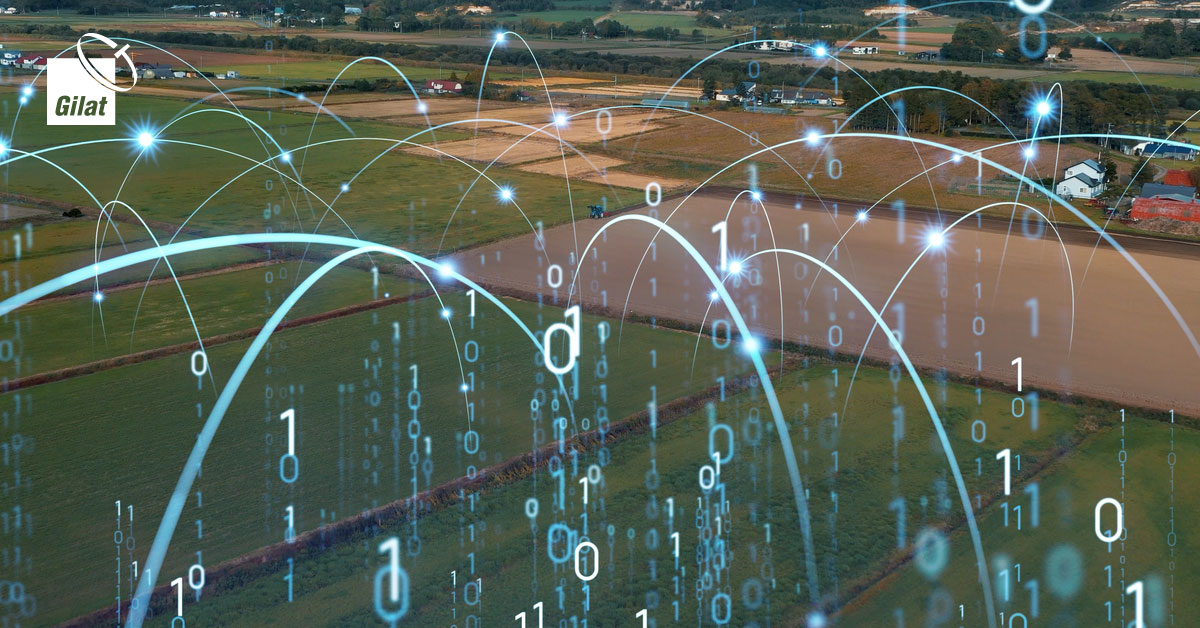
GILAT BLOG
Satellite Communications: Driving the Real Promise of IoT
July 22, 2021
_______________
By Daniel Itzigsohn, Gilat’s Senior Product Manager, 5G
IoT is Here and Now
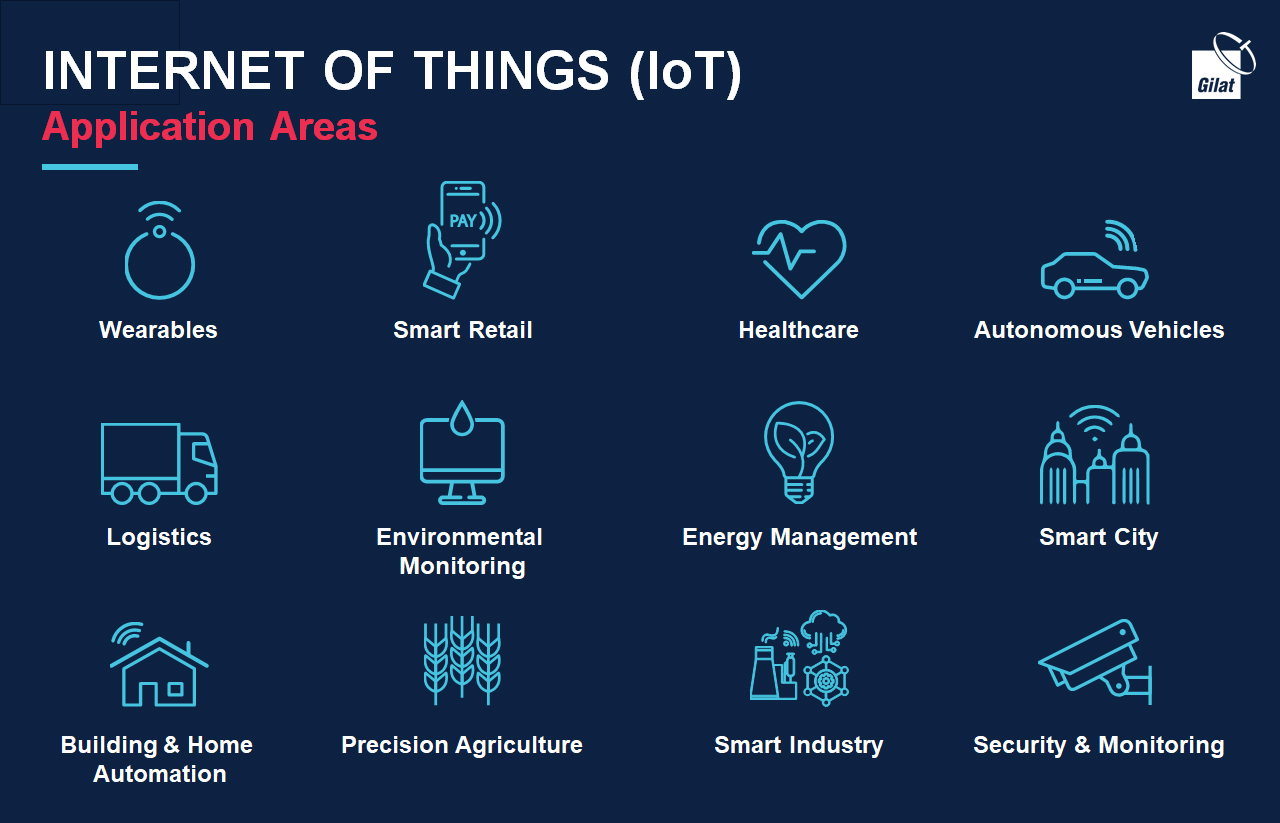
The Internet of Things, or IoT, refers to the billions of physical and logical devices worldwide that are now connected to the internet, all collecting and sharing data. In fact, the number of devices on the planet surpassed the number of humans some years back, and this upward trend is continuing. With access to cheap computer chips and sensors and the ubiquity of wireless networks, it’s possible to turn anything, from something as small as a pea to something as large as a city, into a part of the IoT.
More specifically, IoT utilizes specific sensors, protocols, networking equipment, programs, and applications to retrieve, transfer and analyze data in order to obtain value-generating information across an ever-growing set of use cases, including precision agriculture, Industrial IoT (IIoT), Enterprise IoT (EIoT), telemedicine, logistic chains, Smart City, retail, UAVs, environment and more.
IoT has expanded its footprint around the globe, including to places that have limited or even no internet connectivity, including remote farms and factories, ships, mines, and oil rigs. The data generated by these IoT implementations is key to the safe and cost-efficient operation, monitoring, planning, and advancement of the businesses they support. This data has been coined the “new oil of the digital economy”.
Satellites are Key to IoT
Satellite communication solves the business imperative for fast broadband speeds and ubiquitous coverage to transfer large volumes of data around the world. Satellites can reach most if not every location on the planet, are reliable and flexible, and most importantly, can provide communication services in areas not served by terrestrial networks (which includes the vast majority of the Earth’s surface.) Whether in the middle of the ocean or in a remote corner of the world, data can be conveyed reliably through satellite communication.
Satellite IoT services have existed for numerous years, and Gilat has been an active player in the field, powering numerous applications for SCADA and Industrial IOT (IIOT).
For example:
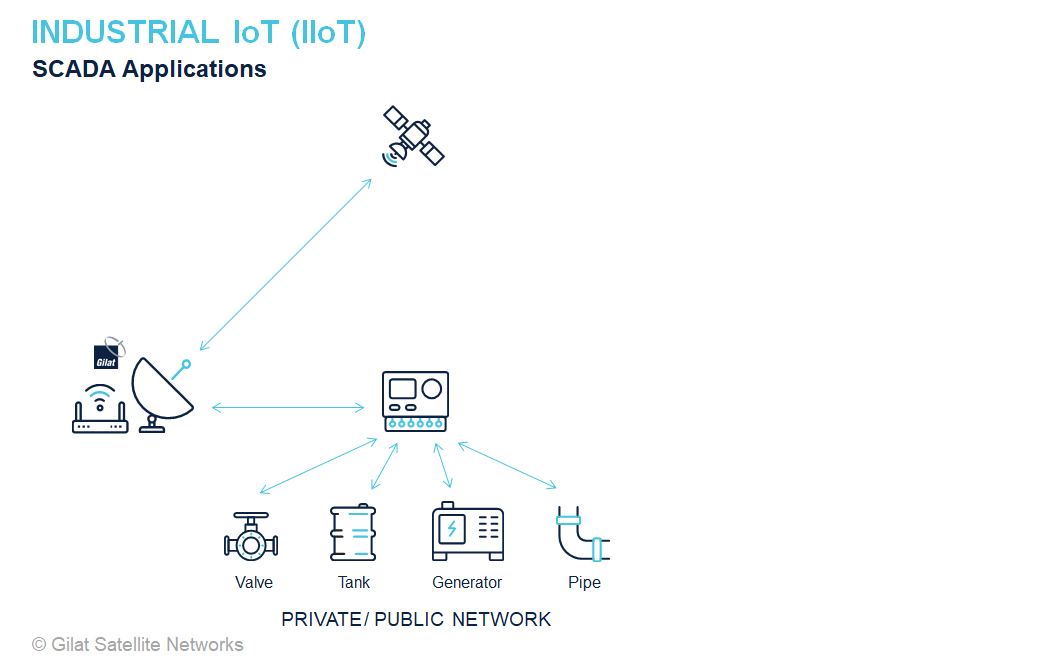
In the UK, Vodafone use Gilat’s satellite network to service the utility companies Cadent and National Grid in the Oil & Gas industry. The SCADA network has satellite backup/backhaul connectivity for remote locations, mainly monitoring, site connectivity, and high priority traffic.
Another example of a SCADA deployment is for TransCanada. In this case, the satellite-based monitoring system is on their pipeline system.
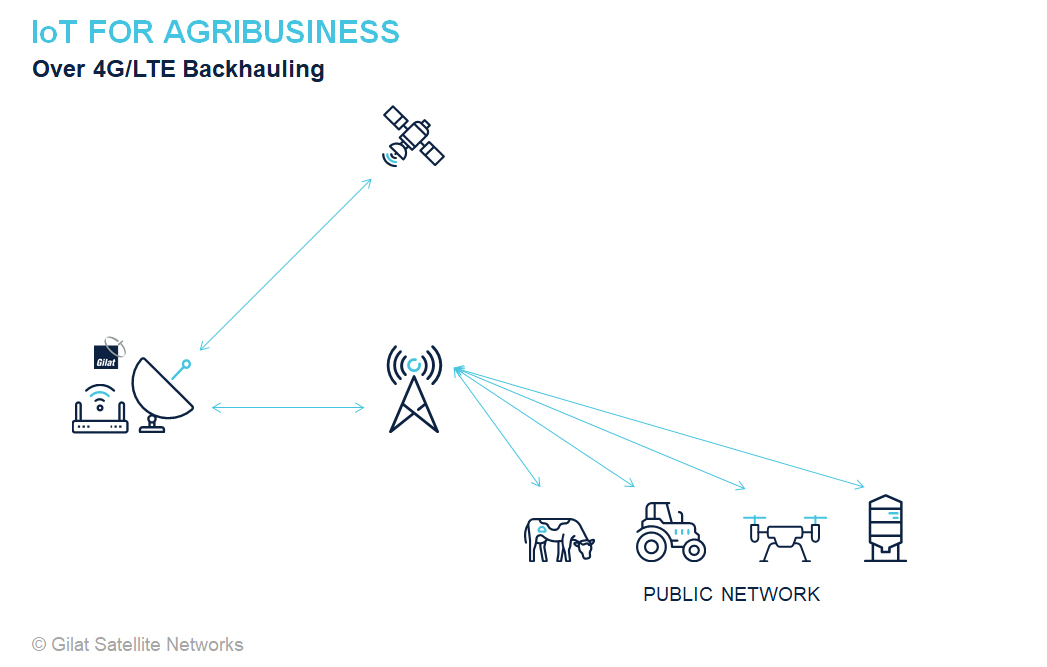
In the agricultural sector, Gilat partnered with TIM Brazil to overcome one of the industry’s main challenges: communications and data sharing between the business offices and the farms, where there is usually a complete lack of or very poor communication signals. Gilat’s satellite backhaul solution enables 4G/LTE services to the agribusiness IoT market, supplying thousands of VSATs to complement TIM’s cellular coverage program, “4G TIM in the Field”. The new 4G network enables connectivity between agriculture machines and operators to real-time control and monitoring of harvesters and tractors, ensuring cost-effective decisions, better crop management, and greater speed, efficiency, and productivity in the production flow. The system was proven to greatly increase the productivity and output of the agribusinesses in the program.
IoT Communication Trends: Private Networks and Edge Computing
While the benefits of IoT are clear, IoT is already challenging the traditional approach to storing, transporting, and analyzing data in the cloud. In many cases, the paradigm of transporting all the data to the cloud for processing it is becoming unsustainable.
Two significant trends are emerging that enable local processing of data and driving the expansion of IoT applications: the surge in private wireless networks and the use of edge computing.
A private network can work in either licensed or unlicensed spectrum and provide dedicated connectivity, optimized services, and a secure means of communication within a defined area (for example, an industrial campus, port, mining site, farm, etc.) Private 4G/LTE and even more so 5G networks will deliver the speed, latency, and other benefits to support multiple use cases.
Edge computing allows network users to capture, store, process, and analyze data closer to the sensor where the data is generated, instead of in more remote, centralized data centers; only relevant data is transported from the edge of the network to the next tier—the cloud—for further analysis. For example, only in the case of detecting data anomalies or a crossed threshold would the system send data for analysis. Furthermore, analyzing data close to the source makes it easier to act on the results quickly, avoiding the latency involved and the high bandwidth costs of sending large amounts of data to the cloud.
As the IoT connects more and more devices and as technology advances, networks must move to decentralized architectures where processing is being done at different aggregation points. Deploying private networks with edge computing on-premise addresses modern business needs of increased data collection, processing, and real-time analysis.
Private Networks and Edge Computing + VSATs are the Ideal IoT Solution
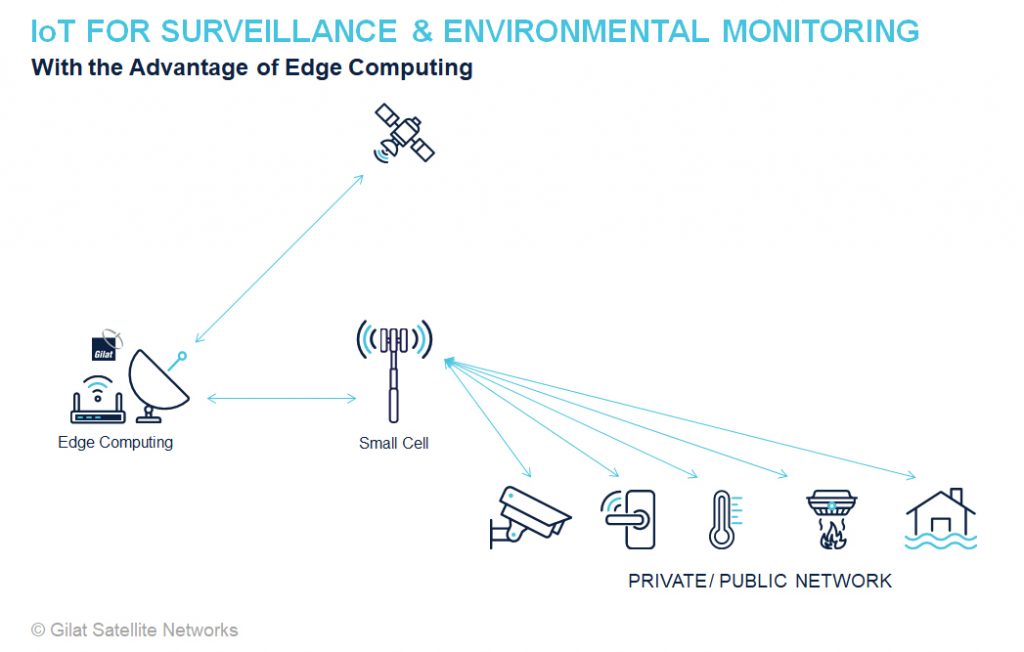
In private networks with large numbers of sensors, the optimal IoT solution is to create local centralized aggregation points for satellite communications. This is where Gilat’s VSATs, powered with edge computing, deliver significant advantages. These central aggregation points provide many benefits to the organization:
This edge enabled architecture is more suited for networks with higher densities of sensors as well as for networks where data volumes are larger. Centralized architectures also enable the establishment of on-premise edge analytic engines and content caches in local aggregation points.
In summary: with the number and complexity of sensors on the rise, the best way to realize the advantages of advanced IoT is for organizations to establish a local private network with edge computing integrated with satellite connectivity.
Use Cases
Content Delivery Optimization
Intelligent IoT devices often require updates to their software/ firmware and/or configuration. Multicasting this content through satellite enables a fast, secure, reliable and cost-effective method to ensure optimal functioning of devices.
Surveillance
All types of organizations are looking to connect their devices, enhance security and create ‘smart surveillance’ solutions. Locally connected sensing systems and smart video surveillance, along with sophisticated edge computing analytics, provide accurate, on-time detection of facility breaches and hazardous events to enable corrective actions in real-time. Surveillance equipment can automatically respond to an event from other sensors. For instance, a camera can be set to automatically point to an area experiencing a smoke alarm or from an area registering an intrusion attempt.
Gilat is Powering IoT
IoT is already here. The private network market is growing exponentially, and edge computing is being adopted by more and more industries needing real-time, reliable, local data analytics. By integrating satellite communications with private networks and edge computing, businesses all over the world, regardless of their geographic location, can have access to the powerful information needed to be successful in the 21st century.
Gilat has been leading the satellite communication market for over 30 years, including IoT deployments around the world. Our global expertise, local presence and outstanding support and delivery capabilities has made us the SATCOM market leader.
To learn more about Gilat’s IoT Solutions, please contact us at: info@gilat.com
